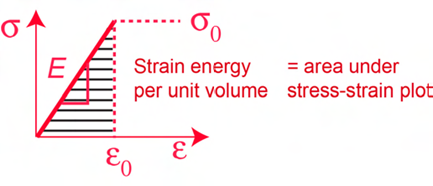(A) Scientific background
Stresses in a Thin-Walled Tube
The demonstration involves the use of 3 large pre-inflated cylindrical balloons. The hoop and axial stresses in such a balloon are dictated by the internal pressure, the wall thickness and the radius of the cylinder, as illustrated below.
Note: This animation requires Adobe Flash Player 8 and later, which can be downloaded here.
Force balances in transverse and axial directions allow these two expressions to be derived. It can be seen that the hoop stress is twice the axial stress. The actual magnitudes can be estimated by evaluating the pressure, wall thickness and radius. See also pressure measurement
Energetics of Crack Advance
The energy-based approach to crack propagation was first presented by A.A. Griffith in the 1920s. It states that unstable crack growth occurs when the stress intensity is high enough that the elastic strain energy released through crack growth is sufficient to supply the energy required to form new surfaces. The driving force for crack advance comes from elastic strain energy stored in the stressed material. The longer the crack the stress region is larger.
Flash
So the energy released when the crack extends (at both ends) by dc is the product of expression
\[U = \frac{{{{\mathop \sigma \nolimits_0 }^2}}}{{2E}}\]
and the increase in stress-free volume.

The strain energy release rate is the rate at which energy is absorbed by growth of the crack. It is usually used the more general equation which is given by
G ~\(\frac{{{{\mathop \sigma \nolimits_0 }^2}c}}{{2E}}\),
where σ0 is applied stress, c is half the crack length and E is Young’s modulus.
Important consequences:
- Larger for larger cracks (flaws)
- More energy released (per unit of crack area) when longer cracks propagate.
If the strain energy released exceeds a critical value Gc, then the crack will grow spontaneously. For a brittle material this fracture energy is simply given by 2 γ (where γ is the surface energy, with the factor of 2 arising because there are two new surfaces created when a crack forms). It can be considered as a critical strain energy release rate, Gc. It is a material property.
Gc = 2 γ.
If a component is to be subjected to a particular stress level in service, then the concept emerges of a critical flaw size, which must be present in order for fracture to occur
\[\mathop c\nolimits_* \approx \frac{{2\gamma E}}{{\pi {\sigma _0}^2}}\]

